Interior and diagram of the Garrett ACE 250 metal detector
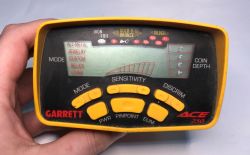 .
.
Here's a look at the inside of a mid-range metal detector. The Garrett Ace 250 is generally available to buy for around £1,250, although I sometimes see used pieces being sold much cheaper. The detector itself is quite capable, as it offers graphical imaging of the conductive properties of the find and the current discrimination settings, various modes of operation (metals, jewellery, coins, etc), selective discrimination, pinpointing and so on....
Except that the detector came to me for inspection after a 'battery drain', so here I will focus on the presentation of the interior rather than the treasure hunt. I received the base itself:
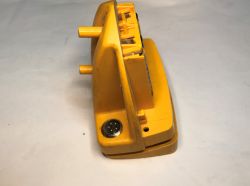
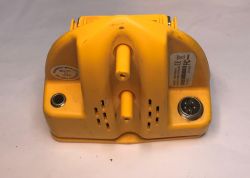
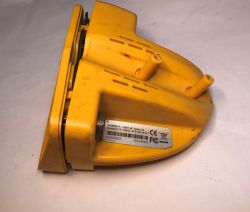
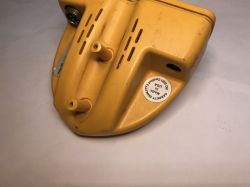 .
.
We take a look inside:
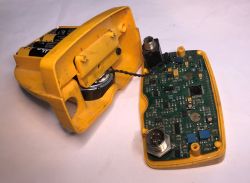 .
.
It vaguely reminds me of a battery spill, but it looks like there was a protective coating on the PCB which has largely washed off? Strange, but not the strangest thing.
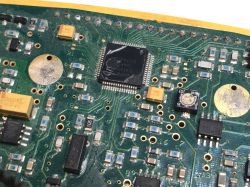
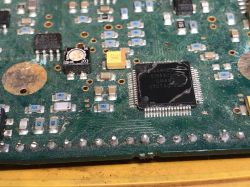
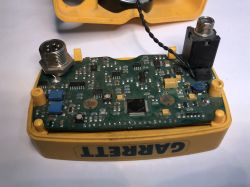
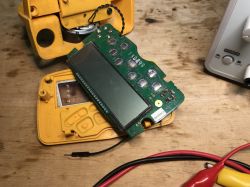
 .
.
What happened here and who was here?
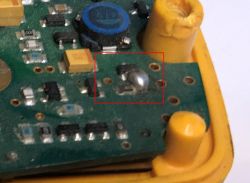 .
.
This is unlikely to be a factory job, additionally the 82k (?) resistor has lost one leg so there is no contact there at all....
I cleaned the PCB of dust with isopropanol and then tried to touch this ball with flux. I also wired myself a lab power supply:
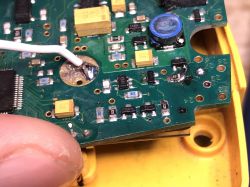 .
.
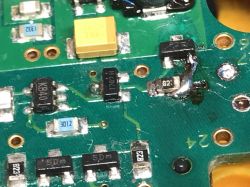 .
.
The detector does not turn on and the resistor is clearly missing one pad. In addition, what's more, on the right you can see that there was a path and a via, and it's not there either....
This does not look at all like battery drain damage.
The path needs to be reconstructed, just where does it lead to?
Fortunately, I was able to find a diagram:
 .
.
 .
.
The defective resistor is resistor R3 82k. The missing path is from the battery (X2, +EB) to R3 82k and VT1 P02. I added a jumper, first as a test:
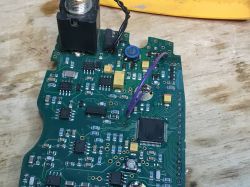 .
.
I replaced the resistor - I have these booklets:
Prepared organizers for SMD components (Sample Book) - how to organize SMD? .
Then, carefully, with the current limitation, I fired up the detector. The power button should wake it up:
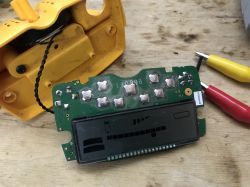 .
.
The hardware seems to have woken up. The current draw isn't very high either.... that doesn't explain why the path burned? Or maybe someone burned it earlier, played with it?
Now need to probe and test, see what happens next.
In the meantime here is a collection of photos of the rest of the PCB, maybe someone will find it useful:
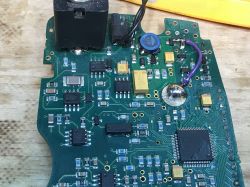
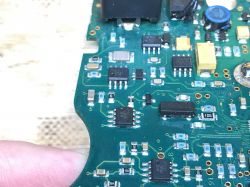
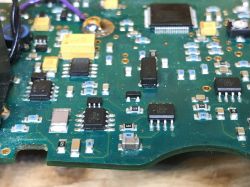

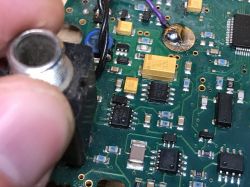

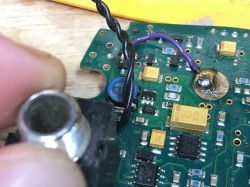
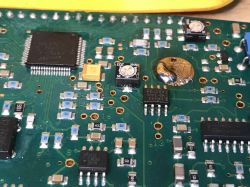

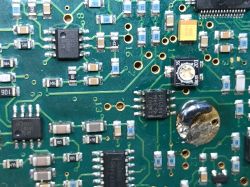
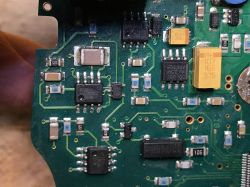
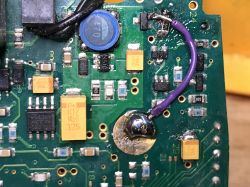
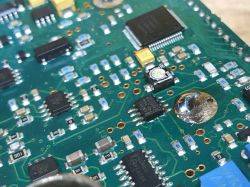 <br/span> <br/span>
<br/span> <br/span>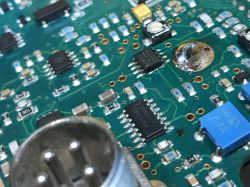 .
.
After taking the photos, I had to do some more tweaking - removing some bonding from the battery contacts. Connecting the wire in the situation in the photos with this interfered, I had to fix the solder.
The owner was happy to take back the detector, if there were any problems he was to let us know, and there have been no reports since, so it seems to have run its course. The mystery, however, remains a mystery - what really happened inside there. All in all, that's it for now, the presentation would have been more interesting if I'd had a probe as I'd have checked how the detector performed in practice, but maybe that's sometime, maybe I'll borrow it for testing.... To conclude, have any of you perhaps come into contact with any detectors, if so, which ones?
PS: I once started assembling a DIY detector project - the Hammerhead Pulse Induction Metal Detector - but have so far run out of time....



Comments
There is a saying: "Ours have been there." And perhaps even the owner, which he probably won't admit to. [Read more]
R3 pulls up the gate of the P-MOSFET to the source in the power circuit. There is still some SD_U14 going to this gate, perhaps this is connected to the complementary output. Error or sloppy assembly... [Read more]
To me that massive drop of tin looks like an attempt to make a bridge. I know from experience that if the distances are a bit bigger, it's not easy. [Read more]
Using too high a temperature when soldering can end up like this, so it's worth experimenting at an electro-smashing shop first and breaking down the pads/elements there to avoid spoiling the equipment... [Read more]
Exactly on the example of my case well, unfortunately at the beginning I also damaged something and not just one it was a novelty for me mentioning here the microscope and even when I connect the inspection... [Read more]
I've never seen a detector inside before. Although there are no ,,black glutes". Thanks for the large number of photos and the diagram. #6 for most pix you need a permit. Worse if you find a bum... [Read more]
Hello, I have dealt and still deal with detectorists, I have even written a little about it, even writing my master's thesis. I have even written a little about it, even writing my master's thesis. I have... [Read more]
The ACE 250, nicknamed the canary because of its colour, although classified as an 'entry level' detector is a pretty good piece of equipment and often successfully competes with many more expensive detector... [Read more]
I used this model to find ironstone in the field. I didn't find any iron. In the yard I managed to find beer caps. Somewhere in the woods it squeaked hard, but I didn't want to dig for explosive surprises. In... [Read more]
To me, my father once made a toy on a two-frame feta. It was able to detect the bathtub and the fridge in the flat. Some smaller things from a short distance too, but I didn't run around in the fields... [Read more]
The hobby metal detector does a little more than detect 'iron'. In general, it is probably the abundance of coastal or other beaches that has made this equipment so popular. Some of the simpler models... [Read more]
You are wrong, discrimination in the simplest version of the detector allows you to ignore iron in favour of precious metals but without identifying them. On better detectors you can turn on Notch or... [Read more]
. Have you mate ever seen a modern detector? If not then at least read what AoT_Hunter_PL wrote about identification. [Read more]
Hi. Not necessarily, since the 1980s-90s detectorists have been and are widely used both amateur and professional for archaeological work, searching for militaria, coloured small objects, and there is... [Read more]
The colleague above was clear and this message is clearly wrong. In simpler analogue detectors with discrimination there is no identification and yet you can successfully use discrimination to avoid digging... [Read more]